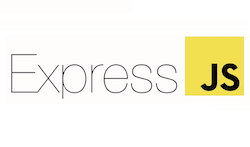JavaScript frameworks are widely used in web development to simplify and speed up the development process. In this article, I will explain JavaScript frameworks and will also make a list of the best JavaScript frameworks. First of all, let’s try to understand what exactly a JavaScript framework is.
What is a JavaScript framework?
A JavaScript framework is a collection of pre-written JavaScript code that provides a structure for building web applications. It provides a set of rules, guidelines, and pre-built modules that help developers create web applications faster and with less code.
A JavaScript framework provides a structure for developing web applications, including guidelines for code organization and development workflows. It can save developers time by providing pre-written code for common tasks, such as handling user input, managing data, and interfacing with external services. JS frameworks also provide a standardized approach to writing code that makes it easier to develop and maintain code. Frameworks promote consistency in coding practices and user interface design, which can help make the application more user-friendly.
What’s the difference between a JavaScript library and a JavaScript framework?
The main difference between a JavaScript library and a JavaScript framework is that a library is a collection of functions that can be called from your own code, while a framework provides a set of rules and guidelines for building an application. A library is generally a standalone set of code that can be used in any project, while a framework is often designed for a specific type of application and may have additional requirements and dependencies. Additionally, libraries are generally less prescriptive than frameworks, and do not provide as much structure for the overall application.
Best JavaScript frameworks
1. React
Developed by Facebook, React is a popular JavaScript library for building user interfaces. It provides a simple and efficient way to create reusable UI components. React is widely used for building web applications, particularly single-page applications, and has become one of the most popular front-end libraries for web development.
React is based on the concept of components, which are reusable building blocks for user interfaces. Each component is a self-contained piece of code that defines the layout and behavior of a specific part of the user interface. Components can be nested within other components, allowing complex user interfaces to be built from smaller, simpler building blocks.
Also see: Reat Tutorials
2. Node.js
Node.js is a server-side JavaScript runtime that allows developers to build scalable, networked applications. It provides an event-driven, non-blocking I/O model that makes it efficient and fast. Node.js has a large and active community of developers, and is widely used for building web servers, chat servers, and other networked applications.
Also see: Node.js Tutorials
3. Angular
Developed by Google, Angular is a full-featured framework for building complex web applications. Angular provides a range of features such as two-way data binding, dependency injection, and modular architecture. It uses TypeScript, a statically-typed superset of JavaScript, and has a large community of developers and contributors.
Also see: Angular Tutorials
4. Vue.js
Vue.js is a progressive framework for building user interfaces. It is lightweight and easy to learn, making it a popular choice for developers who want to create single-page applications quickly. Vue.js provides a set of core libraries that can be used as building blocks for web applications, and also supports a range of plugins and extensions.
Also see: Vue.js Tutorials
5. Ember.js
Ember.js is a framework for building ambitious web applications. It provides a range of features such as routing, templates, and data management, making it a powerful choice for complex applications. Ember.js follows the “convention over configuration” approach, which means that it provides a set of defaults that can be customized as needed.
Also see: Ember.js Tutorials
6. Backbone.js
Backbone.js is a lightweight JavaScript library that provides a range of tools for building client-side web applications. It emphasizes simplicity and modularity, making it a popular choice for small to medium-sized applications. Backbone.js provides a set of basic building blocks for web applications, and can be extended with plugins and other third-party libraries.
Also see: Backbone.js Tutorials
7. Express.js
Express.js is a flexible and minimalist framework for building web applications and APIs using Node.js. It provides a range of features such as routing, middleware, and templating, making it a powerful choice for building server-side applications. Express.js is widely used for building RESTful APIs, and has a large ecosystem of third-party middleware and plugins.
| Framework | Description | Pros | Cons |
|---|---|---|---|
| React | A lightweight library for building user interfaces | Fast rendering with the virtual DOM, strong community support, large ecosystem of third-party libraries | Steep learning curve for beginners, requires knowledge of other tools like webpack and Babel |
| Node.js | A server-side JavaScript runtime for building scalable, networked applications | Event-driven, non-blocking I/O model, efficient and fast, large and active community | Not suitable for CPU-intensive tasks, may require additional modules for certain functionality |
| Angular | A full-featured framework for building complex web applications | Two-way data binding, strong support for dependency injection, large and active community | Steep learning curve, can be slow for smaller applications, often requires verbose code |
| Vue.js | A progressive framework for building user interfaces | Lightweight and easy to learn, intuitive syntax, fast rendering with virtual DOM | Smaller community than React and Angular, less powerful for complex applications |
| Ember.js | A framework for building ambitious web applications | Strong conventions and defaults, powerful data management and routing, excellent developer tools | Large learning curve, less flexible than other frameworks, may not be suitable for small projects |
| Backbone.js | A lightweight library for building client-side web applications | Easy to learn and use, good for small to medium-sized applications, flexible and modular | Limited features compared to other frameworks, may not be suitable for complex applications |
| Express.js | A flexible and minimalist framework for building web applications and APIs using Node.js | Simple and easy to use, fast and efficient, extensive middleware ecosystem | Limited features compared to other frameworks, may not be suitable for complex applications |
React is the most popular JavaScript framework by a good margin. Most developers think that React is the best JavaScript Framework.
A JavaScript framework is a collection of pre-written JavaScript code that provides a structure for building web applications.
Vue.js is the fastest JS framework available.
jQuery is not a JavaScript framework. I tis a JavaScript library.













